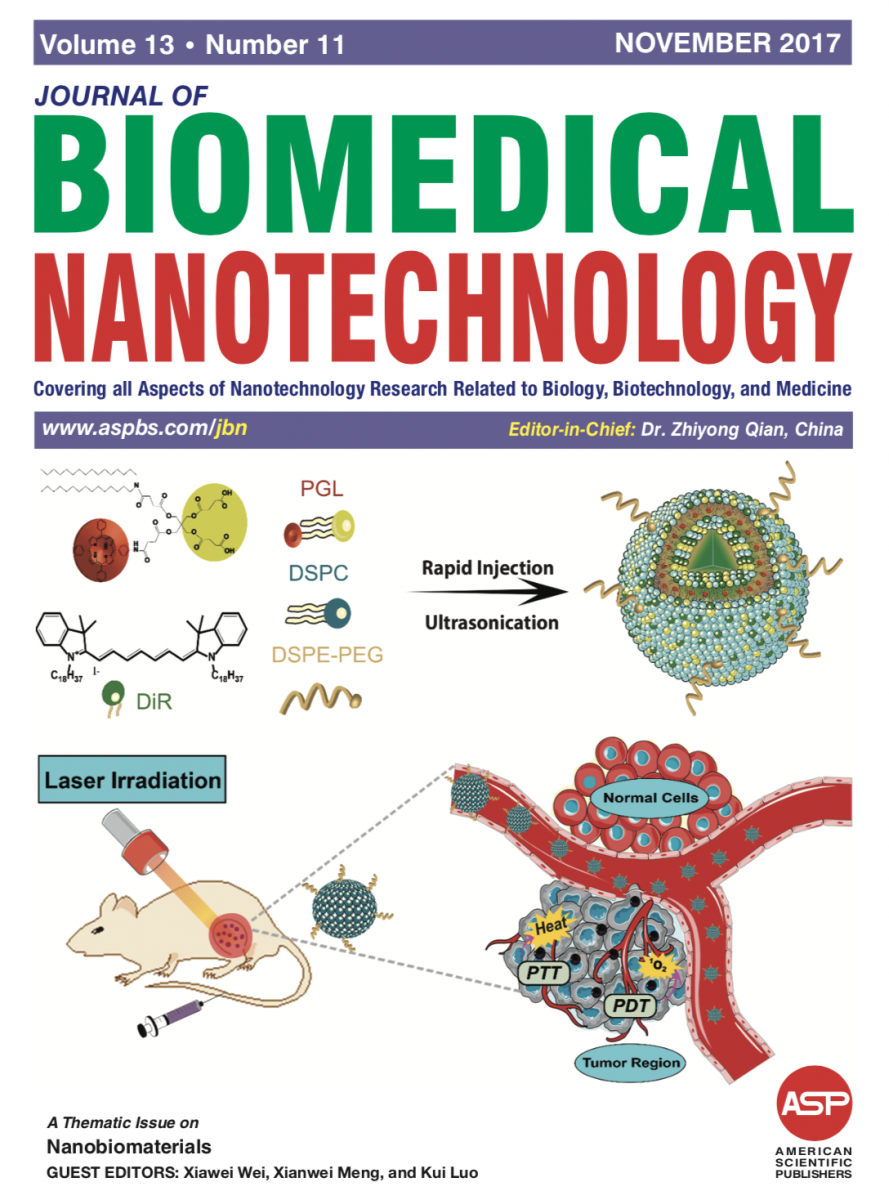Recently, our team has made important progress in the diagnosis and treatment of tumor. The research is published in the cover paper in Journal of Biomedical Nanotechnology.
Detail: A Novel Cyanine and Porphyrin Based Theranostic Nanoagent for Near-Infrared Fluorescence Imaging Guided Synergistic Phototherapy, (2017,13: 1468-1479, doi:10.1166/jbn.2017. 2427)

Abstract
Design and synthesis of multifunctional organic nanoparticles (NPs) for non-invasive diagnosis and phototherapy of cancer are widely acknowledged. However, limited drug loading of NPs are major limitations for attaining synergistic effect in most of the combination therapies. Herein, a novel cyanine-porphyrin combined NPs (PGL-DiR) was fabricated in a simple and inexpensive way for the treatment of prostate cancer. A most commonly used near-infrared fluorescent (NIRF) cyanine dye, DiR was chosen as a photothermal agent to encapsulate in a porphyrin grafted lipid (PGL) (PGL-DiR) NPs of average size 156.25±31.31 nm. Unlike conventional liposomes, the self-assembled PGL morphology revealed encapsulation efficiency of DiR higher than 98%. However, as observed in vitro, DiR loading contents could trigger obvious quenching of singlet oxygen (1O2) by PGL thereby reducing the efficiency of PDT. Nevertheless, after successful photobleaching of DiR, as prepared PGL-DiR NP could facilitate enhanced synergistic photothermal and photodynamic (PTT-PDT) therapy both in vitro and in vivo. After intravenous administration of PGL-DiR NPs in a PC3 tumor xenograft mice, a high accumulation in tumor until 24 hrs was clearly evident via NIRF imaging. With the successive laser irradiation, these NPs effectively suppressed the tumor growth synergistically as PTT < PDT < PTT + PDT while compared to monotherapies such as PTT or PDT alone. These results demonstrated that as prepared PGL-NPs could serve as an excellent theranostic agent both in vitro and in vivo for combined therapy of prostate cancer.